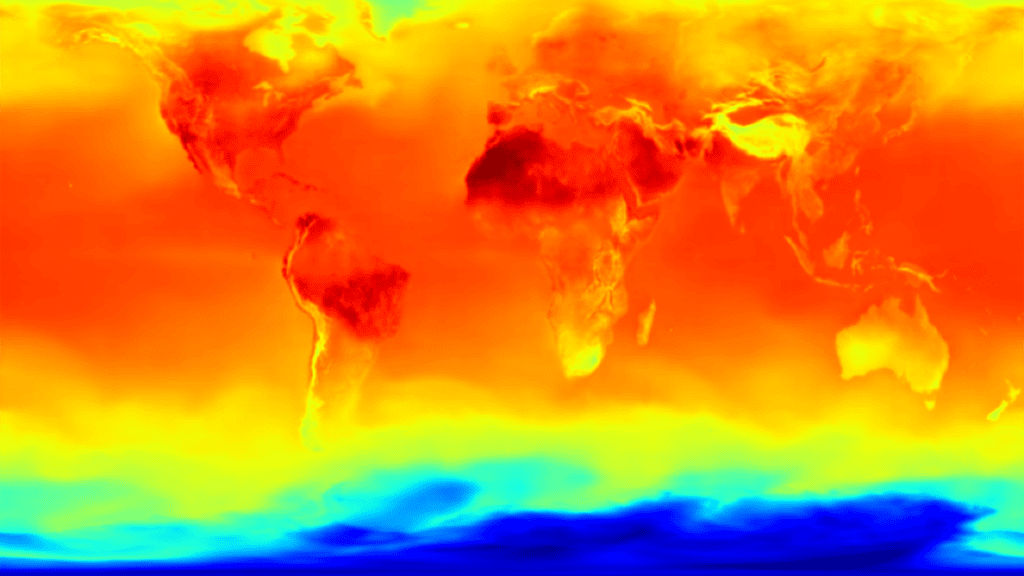New AI Foundation Model Set to Revolutionize Weather and Climate Analysis
Yorktown Heights, N.Y. — September 23, 2024 — If you’ve ever worried about unpredictable weather patterns or the long-term impacts of climate change, there’s exciting news on the horizon. IBM, in collaboration with NASA and the Oak Ridge National Laboratory, has unveiled a groundbreaking AI foundation model designed to provide powerful insights into weather and climate data. This model goes beyond mere forecasting, allowing scientists, developers, and businesses to analyze and understand complex meteorological phenomena in ways we’ve only dreamed of before.
What Makes This AI Model Unique?
Launched as open-source, this new model is called the "Prithvi WxC: Foundation Model for Weather and Climate". Its unique architecture and rigorous training process enable it to address a range of challenges tied to both short-term weather and long-term climate projections. The creators have published a paper outlining its capabilities, revealing some intriguing applications:
- Generating targeted forecasts based on local data
- Predicting and detecting severe weather patterns
- Enhancing the spatial resolution of global climate simulations
- Improving the representation of physical processes in numerical models
One striking feature of this foundation model is its ability to reconstruct global surface temperatures by accurately working with just five percent of original data, showcasing its potential in data assimilation tasks.
A Treasure Trove of Data
Pre-trained on a remarkable 40 years of Earth observation data from NASA’s MERRA-2 program, the model is adaptable for various scales—global, regional, and local. This flexible design is precisely what meteorologists and climate scientists need as they strive to deliver accurate forecasts and climate insights.
Applications at a Glance
This model isn’t just another forecasting tool; it’s a versatile instrument for several scientific applications. Here are two tailored versions that showcase its capabilities:
-
Climate and Weather Data Downscaling: This technique allows scientists to infer high-resolution outputs from lower-resolution data, amplifying the details in forecasts about temperature, precipitation, and wind patterns. The result? Localized forecasts that can go up to a stunning 12 times the original resolution.
- Gravity Wave Parameterization: Gravity waves play a crucial role in atmospheric processes like cloud formation and turbulence. Previous models struggled to effectively capture these dynamics, leading to uncertainty in climate simulations. This new foundation model aims to change that, offering improved estimations that could enhance climate modeling accuracy.
What Leaders Are Saying
Karen St. Germain, director of NASA’s Earth Science Division, emphasized the timeliness of this advancement, stating, "The rapid changes we’re witnessing on our home planet demand actionable science. This foundational model will give people the tools they need to make informed decisions on how to prepare, respond, and mitigate."
Juan Bernabe-Moreno, Director of IBM Research Europe, echoed these sentiments, saying, "While many models are designed for fixed datasets, we’ve built this one for flexibility—capable of addressing both global and localized phenomena, making it valuable for understanding hurricanes, climate risks, and immediate severe weather."
Arjun Shankar, of Oak Ridge National Laboratory, expressed pride in the collaboration, underscoring the goal of using advanced computing for national importance, especially in tackling weather and climate challenges.
Testing the Waters
In a practical application of this model, IBM is partnering with Environment and Climate Change Canada (ECCC) to experiment with very short-term precipitation forecasts. Using real-time radar data, the team is exploring the effectiveness of the model to provide timely and accurate weather updates.
Looking Towards the Future
This initiative is part of a larger collaboration between IBM and NASA aimed at harnessing AI for Earth exploration. Last year’s launch of the Prithvi geospatial AI foundation model was a success, affecting various research areas from disaster patterns to biodiversity. The newly released models are now available for download on Hugging Face, making groundbreaking technology accessible to all.
The atmosphere is buzzing with anticipation. As AI technology continues to evolve, we are potentially on the brink of significant improvements in our understanding of climate and weather, paving the way for informed decision-making for the future.
Want to stay in the loop on all things AI? The AI Buzz Hub team is excited to see where these breakthroughs take us. Share this article with fellow enthusiasts or subscribe to our newsletter to keep abreast of the latest developments!




